Knowing what makes computers tick is key for smart choices. The hardware and software of computers shape how they work and their performance. Learning about important specs like speed, storage, and memory helps you pick the right computer for you. If for work, gaming, or everyday use, understanding these aspects is vital. It helps you find a computer that fits your needs perfectly.
Core Features of Computers
Knowing the core features of a computer is key to enjoying it. These include processing speed, storage, and memory types. Each feature affects how well your computer performs.
1-Processing Speed
Processing speed shows how fast a computer can do tasks. It’s measured in gigahertz (GHz). A higher GHz means tasks are done quicker, making your computer run smoothly.
2-Storage Capacity
Storage capacity is crucial, shown in gigabytes (GB) or terabytes (TB). It tells you how much data your computer can hold. More storage means you can keep more files and apps, making your experience better.
3-Memory Types
There are different memory types, like RAM and ROM. RAM affects how fast you can open apps. ROM keeps important info even when the computer is off. Knowing about these helps you pick the right computer for you.

A visually striking composition showcasing the core features of computers: a central sleek modern desktop tower surrounded by colorful circuit patterns, luminous microchips, an intricate motherboard, glowing data streams, and various input/output devices like a keyboard and mouse, all set against a high-tech digital backdrop with abstract geometric shapes and vibrant colors.
Understanding Computer Specifications
Choosing a computer means looking at computer specifications that affect how well it works. These key specifications help you pick the right one for work, gaming, or daily use.
Key Specifications to Consider
Important things to check are the CPU type, RAM amount, and graphics card. These computer traits are crucial for performance. For example, the CPU’s speed impacts task processing, and RAM lets you run many apps at once.
Graphics card specs also matter a lot, especially for gaming and graphics-heavy tasks.
Impact of Specifications on Performance
The setup of these key specifications can make a big difference. More RAM means you can use many apps without slowdown. A good graphics card makes games and graphics smoother.
Looking at these parts helps you pick the right computer for your needs.
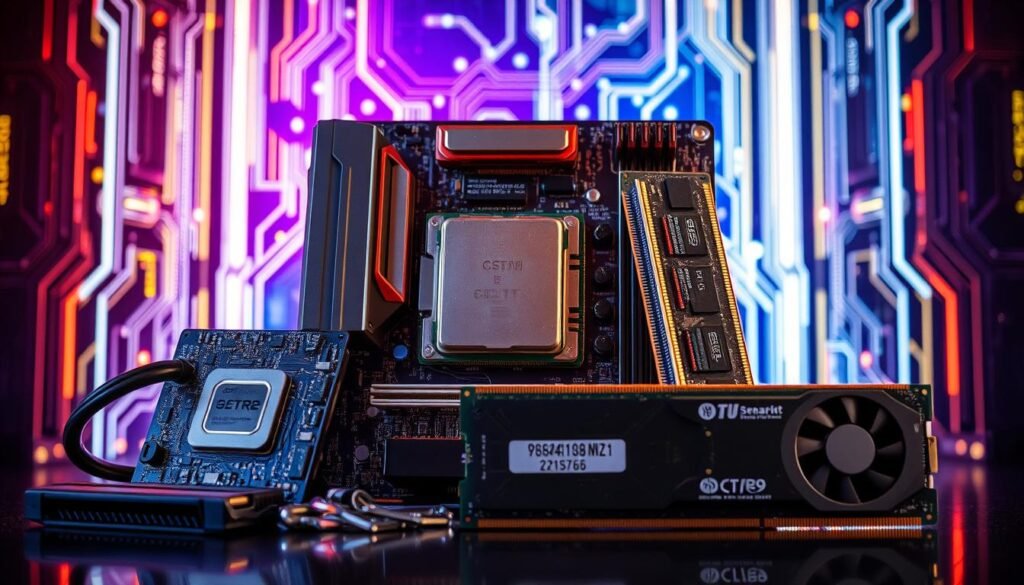
A visually striking composition showcasing various computer components like a motherboard, CPU, RAM sticks, and graphics card, arranged artistically against a high-tech background with glowing circuit patterns and digital elements, emphasizing the intricate details and textures of each component.
Key Characteristics of Computer
It’s important to know the difference between hardware and software. Hardware includes things like the CPU, RAM, and storage. Software is the operating systems and apps that run on this hardware.
Hardware vs. Software Attributes
Hardware tells us about a computer’s physical abilities. It shows how fast it can process info, how much data it can hold, and how well it can handle tasks at once. On the other hand, software is about the programs that use these parts. Knowing these differences helps you choose the right computer for your needs.
Integration of Components
How well components work together is key to a computer’s performance. Software needs to use hardware strengths well to work smoothly. When everything works together, you get the most out of your computer. Understanding how these parts integrate helps you see how they meet various computing needs.
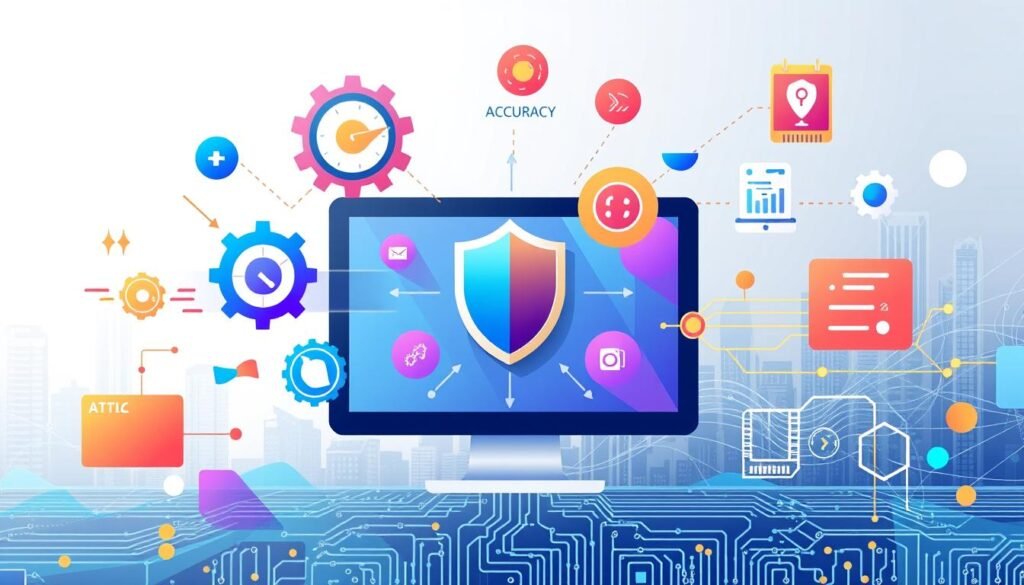
A visually dynamic representation of a computer’s key characteristics, featuring abstract shapes and vibrant colors symbolizing speed, accuracy, versatility, automation, and storage. Include elements like gears for processing speed, a shield for security, interconnected networks for connectivity, and data streams flowing to illustrate data management. The background should be a modern digital landscape to enhance the theme of technology and innovation.
Essential Computer Capabilities
Choosing the right computer is key to a great experience. Its capabilities affect how well it does daily tasks, supports your work, and connects with other tech.
Multitasking and Performance
Multitasking is a must for those who use many apps at once. A good computer handles several tasks smoothly, boosting your productivity. This is especially true for those who use lots of resources or work on creative projects.
Networking Capabilities
Good networking lets you connect to the internet and devices easily. A strong connection means faster data sharing and better teamwork. It makes streaming, downloading, and sharing easy, making your computer more useful.
Compatibility with Applications
It’s important for your computer to work with all your software. Whether for work, gaming, or hobbies, a versatile system is a relief. A computer that supports many apps shows its flexibility and improves your experience.
Exploring Computer Components
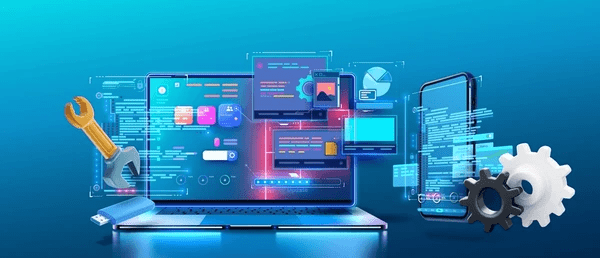
Understanding key computer parts is essential for building or upgrading a system. Each part has a special role in how well your computer works. This affects your overall experience using it.
Central Processing Unit (CPU)
The CPU is the computer’s brain, handling instructions and calculations. Its power determines how fast your computer runs. A strong CPU helps with multitasking and running demanding apps.
Choosing the right CPU is crucial. It impacts everything from gaming to professional tasks.
Motherboard Functions
The motherboard connects the CPU to other important parts like memory and storage. It’s the computer’s backbone, allowing all parts to communicate. Knowing how the motherboard works is key when picking computer parts.
A good motherboard ensures better performance and makes upgrades easier.
Peripheral Devices
Peripheral devices add to your computer’s capabilities. Items like printers, keyboards, and external drives make your experience richer. Think about what you need to do with your computer when picking peripherals.
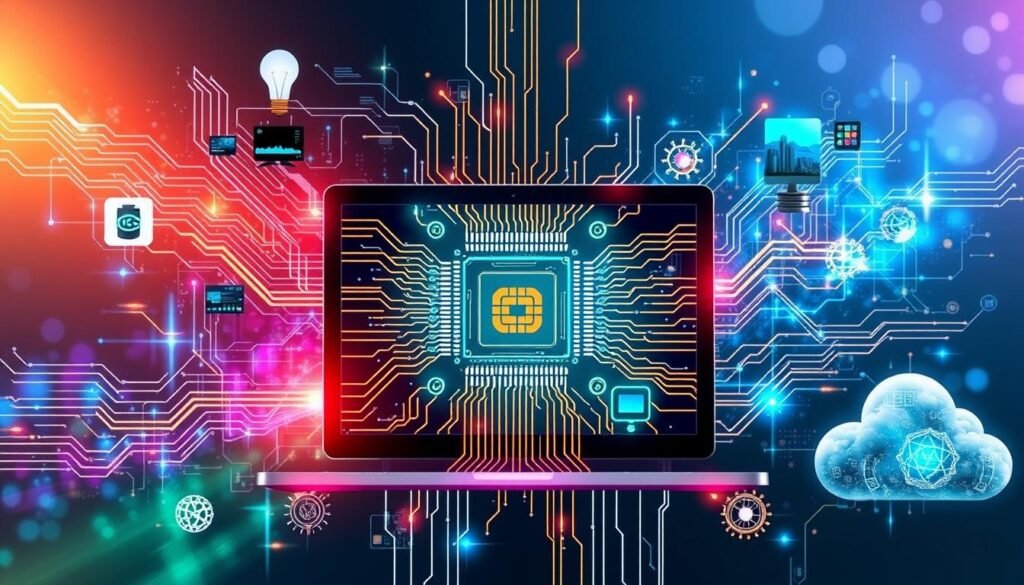
Computer Qualities and Attributes
When we talk about computer qualities, two key traits stand out. These are reliability and durability, and scalability and upgradability. Knowing about these can help you choose the right computer for your needs.
Reliability and Durability
Reliability means a computer works well all the time. This is crucial for those who use their computers for work. Any downtime can really hurt productivity. Durability is about how well a computer can handle physical wear and different environments.
Choosing a reliable and durable computer means your investment will last. It will keep working well, even in tough conditions.
Scalability and Upgradability
Scalability is about a computer growing with your needs. It can handle more work without slowing down too much. Upgradability lets you add new parts or features to your computer.
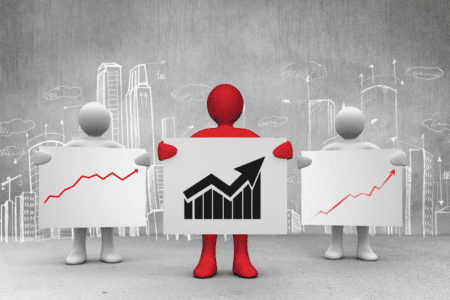
These qualities are great for businesses. They help technology keep up with growing demands and changes.
Conclusion
Understanding computers is key to picking the right one for you. Look at features like speed, storage, and memory. These help your computer work well, for work or play.
Knowing what makes a computer tick helps you see its strengths. As tech grows, knowing this stuff helps you keep up. This way, your computer stays up to date with your needs.
Now you know how to choose the best computer for you. With the right specs, you can use technology to its fullest. This makes your digital life better and more efficient.
FAQ
What are the key characteristics of a computer?
Key characteristics include processing speed and storage capacity. They also include types of memory and performance metrics. These factors show how well a computer can do tasks.
How do computer specifications influence performance?
Specifications like CPU type and RAM amount affect task execution. High-quality specs are key for tasks like gaming or graphic design.
What hardware attributes should I consider when buying a computer?
Look at the CPU type, RAM amount, and storage type. Also, consider the motherboard’s capabilities. These factors impact performance and usability.
What software attributes are essential for computer functionality?
Essential software attributes include the operating system and applications. Compatibility with software is key to meet your computing needs.
How does multitasking capability affect a computer’s performance?
Multitasking lets a computer run many apps at once. This boosts productivity and user experience, especially in work settings.
What are the benefits of scalability and upgradability in a computer?
Scalability and upgradability let you improve your computer over time. This makes it adaptable to changing needs without needing a new one.
Why is reliability important in computer performance?
Reliability is key because it means a computer works well consistently. This is vital for users who depend on their systems for important tasks.
What role do peripheral devices play in a computer system?
Peripheral devices, like printers and external drives, add to a computer’s functionality. They let you do more tasks and enhance your computing experience.
How can I assess the essential capabilities of a computer?
To check a computer’s capabilities, look at processing speed, memory types, and networking. These factors show how well a computer can handle different tasks and apps.

